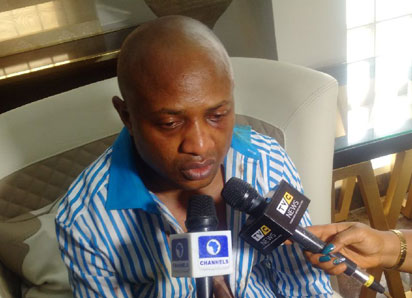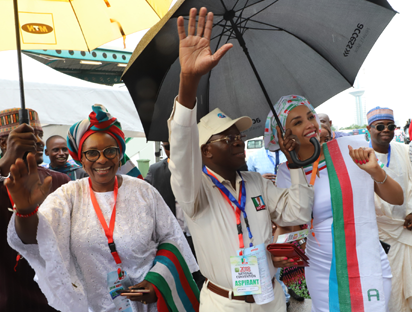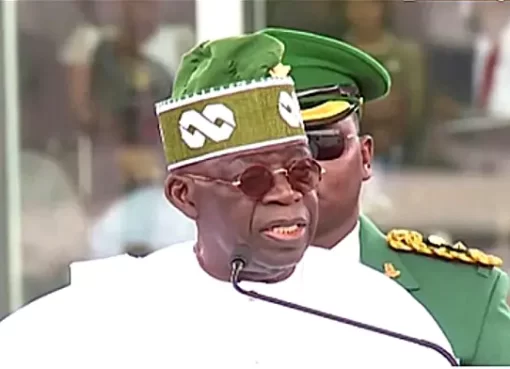…as MinDiver Project boosts investors’ confidence
To facilitate the transformation of the mining sector in line with the reform policies of the administration of President Muhammadu Buhari, the Federal Government in 2017 approved the establishment of the World Bank-assisted Mineral Sector Support for Economic Diversification ,MinDiver, Project.

The critical mandate of the project was to strengthen key institutions in the mining sector so that it could contribute to the diversification of the economy and mitigate the nation’s over-dependence on the oil sector as a source of foreign exchange and revenue.
The scheme , which was to support Nigeria’s mining sector roadmap, was approved in August 2016 by the Federal Executive Council.
The roadmap was aimed at creating a globally competitive mining sector capable of contributing to wealth creation, providing jobs and advancing social and human security, focusing on using mining assets to drive domestic industrialisation and then migrate to winning in global markets through a value chain-based growth.
Currently, MinDiver Project is supporting some strategic reforms that would facilitate the growth of the minerals and metals sector in the country. Some of the direct project beneficiaries in the ministry include vital departments such as Mines Inspectorate, Mines Environmental Compliance, Artisanal and Small Scale Mining, Metallurgical and Raw Material Development, and Steel and Non-Ferrous Department.
Other benefiting agencies under the ministry include the Mining Cadastre Office ,MCO, Nigerian Geological Survey Agency, Nigerian Institute of Mining and Geosciences, the National Metallurgical Development Centre, and Solid Minerals Development Fund.
Also, the strategic activity being supported by the scheme is the upgrade of the mining cadastre system to an entirely digitised platform, the Electronic Mining Cadastre System ,eMC+. It is a state-of-the-art platform used to manage mineral titles for prompt, efficient and transparent delivery.
The development of a mineral economy depends not only on a nation’s mineral potential but also on the organised, transparent and efficient administration of mineral titles.
Consequently, efficient and reliable management of mining titles is considered a backbone to increased investment and growth in the Nigerian mining sector.
To achieve the objective of this assignment, the Ministry of Mines and Steel Development, through the MinDiver Project, engaged the services of a reputable German technology firm, GAF AG.
Since the inception of this activity, the MinDiver Project has facilitated the provision of the necessary infrastructure for the effective operations of the eMC+. These include:
Provision of well-equipped Cadastre offices in the six geo-political zones in the country. The offices are located in Ibadan ,South West, Benin ,South-South, Enugu,South-East, Jos ,North-Central, Kaduna ,North-West, and Maiduguri ,North-East.
Others include provision of official vehicles, procurement of maps for restricted areas, establishment of e-records and archiving, acquisition of topographic maps on a scale of 150,000 for integration into the Mining Cadastre Office database.
The migration of MCO operations to an online web-based mineral title administration system encompasses the digitalisation, automation, e-recording and archiving of the mineral title administration.
In line with the objectives of government reform, the new system will increase investors’ confidence in the nation’s mineral title administration, attract Foreign Direct Investment ,FDI, increase revenue generation, and create wealth and employment for the teeming youth of the country. Accordingly, the automation of the mining cadaster system has been carried out in consonance with the provisions of the Nigerian Minerals and Mining Act 2007 and its regulations.
The introduction of the system will strengthen mineral property rights and security of tenure within the mining sector; enhance the transparency of the mineral licensing process and the government’s regulatory capacity through improved efficiency, information availability and management.
Other specific benefits of the eMC+ system include significant decrease in the time required to assess cadastral dossiers, allowing applicants and titleholders to avoid lengthy and potentially costly waiting periods between application and cadastral decisions.
In the case of renewals or transformation from exploration licenses and mining, shorter waiting times mean a significant increase in the security of tenure.
Another benefit is minimization ,or even elimination, as well as conflicts related to overlaps between adjacent licenses.
Instructively, a computerized system allows early detection of these errors and can correct them before titles are granted, contributing even more to the security of tenure for mineral rights.
It ensures correct application of legal provisions for decrease in opportunities for discretion and corruption.
There is also instantaneous access for applicants and titleholders to updated cadastral information, including the most recent applications. This helps to avoid misunderstandings and conflict over which areas are vacant or occupied, increases transparency, increased efficiency in the automatic generation of statistical products, which facilitates analysis of the state of the mineral rights, cadastral management, and the impacts of
mineral resources policy.
The new system linked to the ministry’s portal is responsible for the management of the mining sector in order to guarantee coordination between the cadastral activity and other agencies focused on geological infrastructure control in mining inspectorate or environmental monitoring.
Meanwhile, the Director-General, Mining Cadastre Office, Simon Nkom, while appreciating the intervention of the MinDiver Project in providing the new infrastructure, said the new licensing system would generate high confidence in potential investors and boost title acquisition.
He said: “In every country, it is obvious and imperative to know that no matter how favourable your geology is, no matter how much your geoscience data is, you need to complement it with a very transparent miner title administration and ensure that the benefits accruable to the industry are achieved through a non-discretional system of title administration”.
The Project Coordinator, Sallim Salam, commended the level of cooperation from stakeholders in the industry, particularly the management and staff of MCO.
He explained that with MinDiver’s successful intervention in MCO, the project has achieved one of the cardinal goals of the roadmap to upgrade the mineral licensing system to meet global standards.
He further noted that the activities of the programme were tailored toward ensuring that the mining sector experienced significant growth in line with federal government’s goal of diversifying the economy, creating more jobs and alleviating poverty.
In April, the upgraded web-based Nigerian Mining Cadastre platform, the eMC+, was rated as the “Best Digital Innovation of the Federal Government in the Year 2022” by the Nigerian Internet Registration Association ,NIRA. NIRA is a non-governmental body established by order of the President of the Federal Republic of Nigeria to manage Nigeria’s country code.
The new MCO web-based digital platform, eMC+, will be launched to the public by the Minister of Mines and Steel Development, Olamilekan Adegbite, at the Nigeria Mining Week Conference commencing on November 1, 2022. The event would end on November 3, 2022.
VANGUARD






